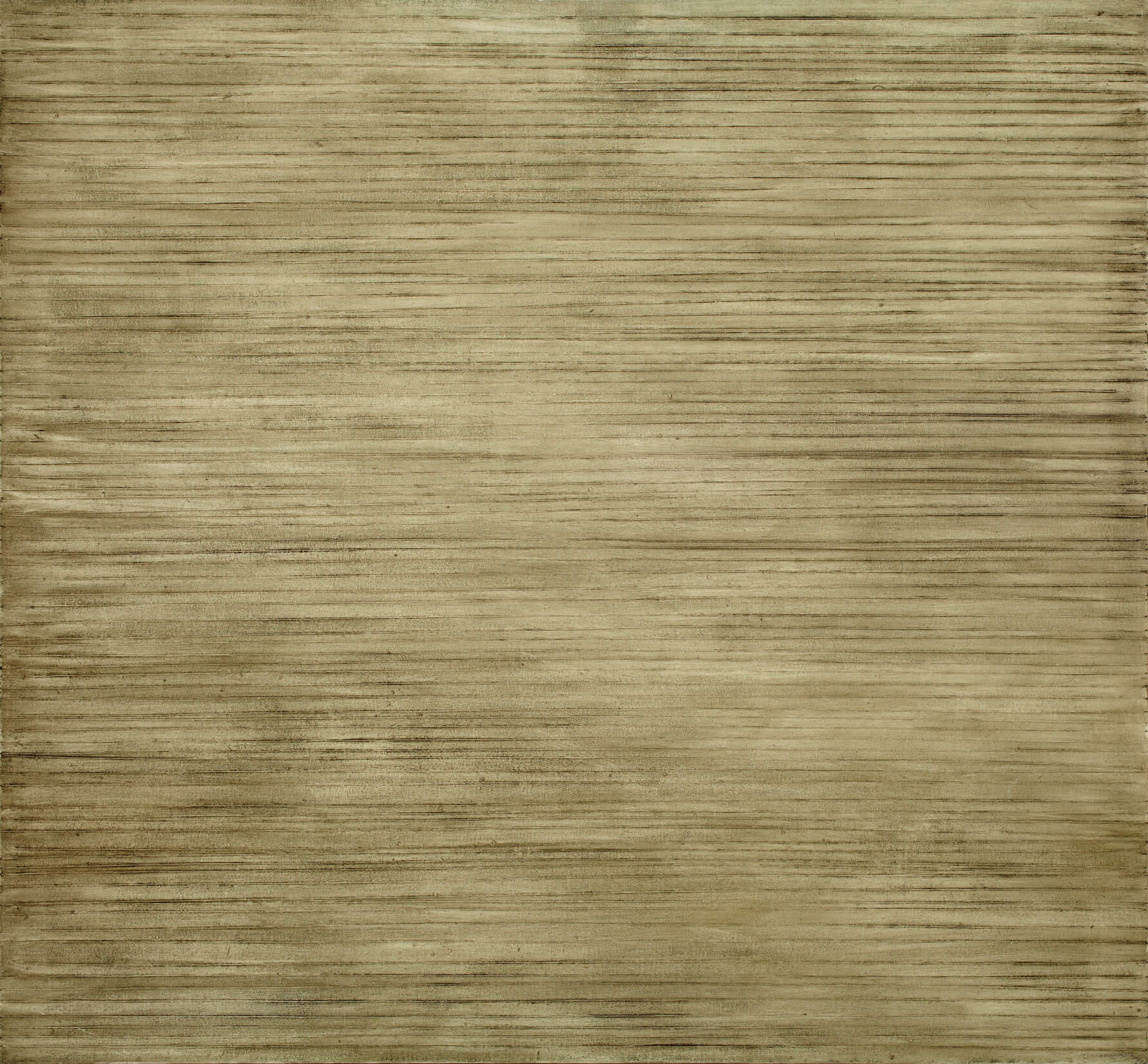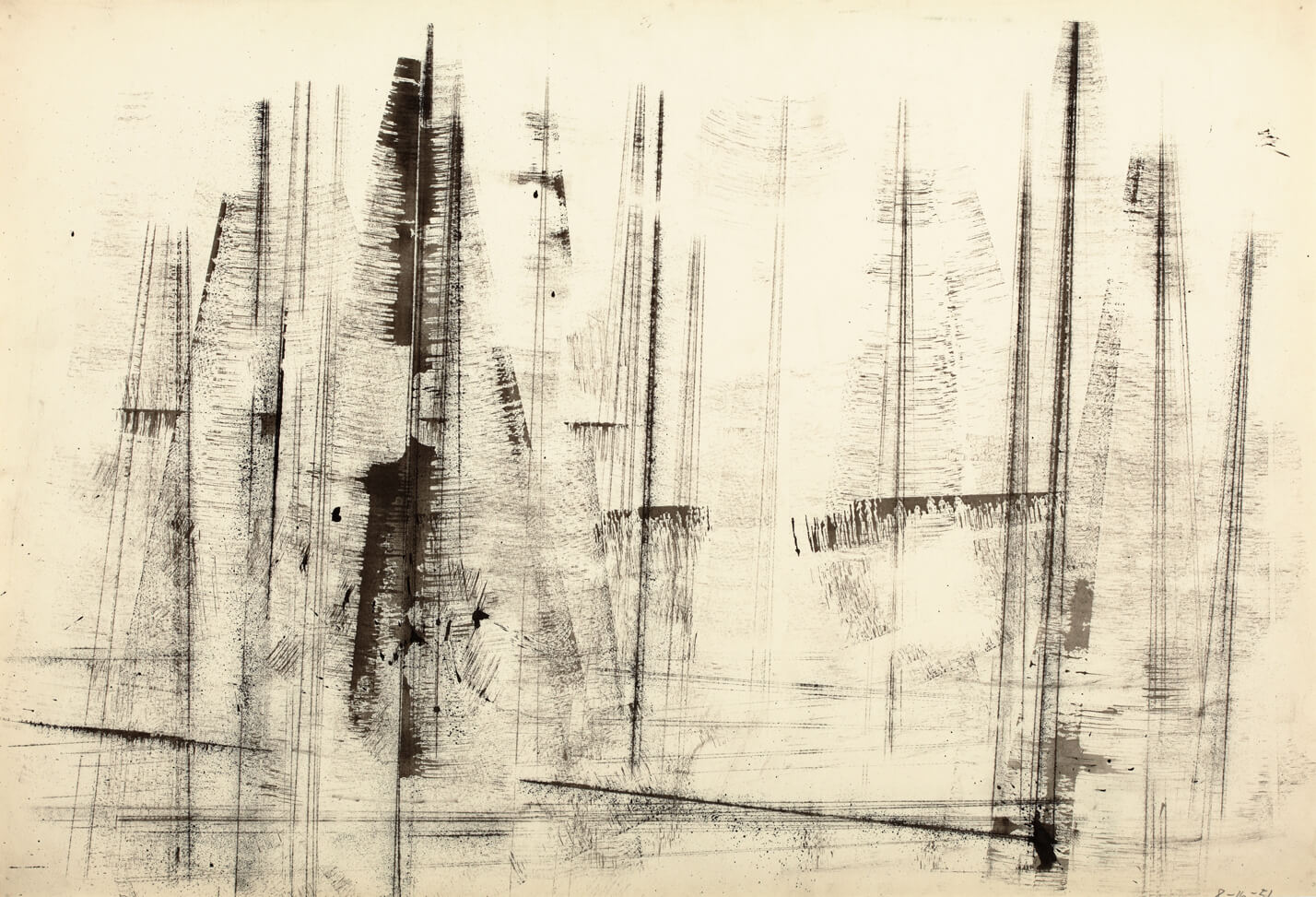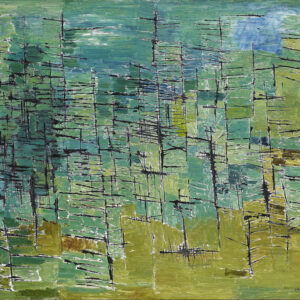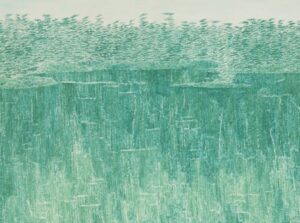Infinite Waves 1957

Kazuo Nakamura, Infinite Waves, 1957
Oil over string on canvas, 94.1 x 101.7 cm
The Robert McLaughlin Gallery, Oshawa
Infinite Waves is a monochromatic dark cream-coloured surface with a series of tightly packed horizontal lines running across the canvas. Kazuo Nakamura considered this work his “most extreme painting.” Critics and historians, too, agree that this canvas and the other String paintings created between 1955 and 1965 are his most radical artistic output. Among collectors and the public, however, the landscapes that he created during this period, such as Lakeside, Summer Morning, 1961, were the most popular.
Infinite Waves was inspired by Nakamura’s occasional use of string dipped in ink to make drawings, as can be seen in Trees, 1951, for example. Describing the process for Infinite Waves, he said: “In that painting it’s a case of gluing thread on the canvas and after that painting white all over and after that dries you put a tone to it and actually that’s it, I think.” Exactly how many String paintings Nakamura created is unknown; Infinite Waves is the most often cited and most frequently reproduced example. It appears in a well-known photograph of Nakamura in his studio.

Although the String paintings are the “most extreme” in the sense that they reduced everything to an elementary unit—in this case, lines—and adopted a near-uniform monochromatic coloration, they are nevertheless an extension of his previous work and the landscape paintings he was creating at the same time. Even the landscapes border on the monochromatic, and their colour is applied with small, uniform brushstrokes.
The meaning of the String paintings is ambiguous. Curator Dennis Reid once described them as “beautifully profound … expansive, infinitely subtle pictures … without limit to their meaning.” Rory Hinton wrote as recently as 2013 that “when Kazuo Nakamura finished painting strings (like Infinite Waves), he started a revolution that demolished the dividing line between painting and physics.” Although a bit of an exaggeration, it is an opinion that Nakamura would likely have agreed with. Joan Murray asked Nakamura in 1979: “If you were to define your own work, would you feel that you were acting more as a scientist painter even then?” to which he replied: “I think so. I feel as a painter I might be painting in let’s say the field of physics.”
Speculation about the specific sources for Infinite Waves, and the String paintings generally, ranges from incorporating Japanese symbolism of the colour white to responding to contemporary photographs recording the traces of subatomic particles, as reproduced in Scientific American. Curator and critic Ihor Holubizky relates that in a conversation with Nakamura, the artist “indicated a revelation and sense of affinity upon seeing scientific photographs of sub-atomic particle tracings while engaged in the string paintings—the hitherto invisible world of nature.” The use of the word “wave” in Infinite Waves might therefore reference the wave theory of matter in physics first proposed in 1924 by Louis de Broglie.
Whatever their source, these paintings by Nakamura were at the forefront of a move toward monochromatic painting, joining the ranks of the White Paintings by Robert Rauschenberg (1925–2008) and the Achromes by Piero Manzoni (1933–1963).

 About the Author
About the Author
 More Online Art Books
More Online Art Books
 Acknowledgements
Acknowledgements